Across the whole civil service, average salaries are just below the UK average – and civil servants are generally dissatisfied with their pay, says Alice Lilly.
See our explainer for our more recent analysis of civil service pay.
Civil servants are generally dissatisfied with their pay…
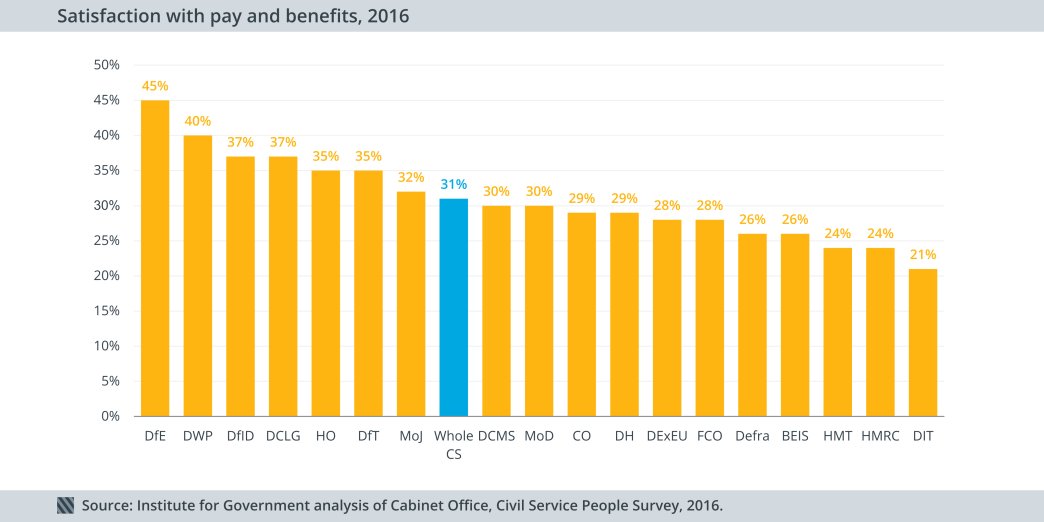
Average pay increases are currently limited to 1% (with some exceptions for specialist skills and Brexit-related appointments) – but it’s clear that many civil servants are dissatisfied with their pay.
In 2016, across the whole civil service, the pay and benefits theme in the annual Civil Service People Survey – which asks civil servants their opinion on a range of issues, from inclusion and fair treatment to resources and workload – scored 31%, a percentage point higher than in 2015. Satisfaction with pay slightly increased between 2015 and 2016 in ten of the departments that existed in both years.
Pay was the lowest-scoring of all ten themes in the engagement survey and in no department did a majority of staff express satisfaction with their pay. Other IfG research has suggested – perhaps unsurprisingly – that the departments where the highest proportion of employees want to leave in the next year are those with the lowest pay satisfaction.
… but higher satisfaction doesn’t always correlate with higher pay.
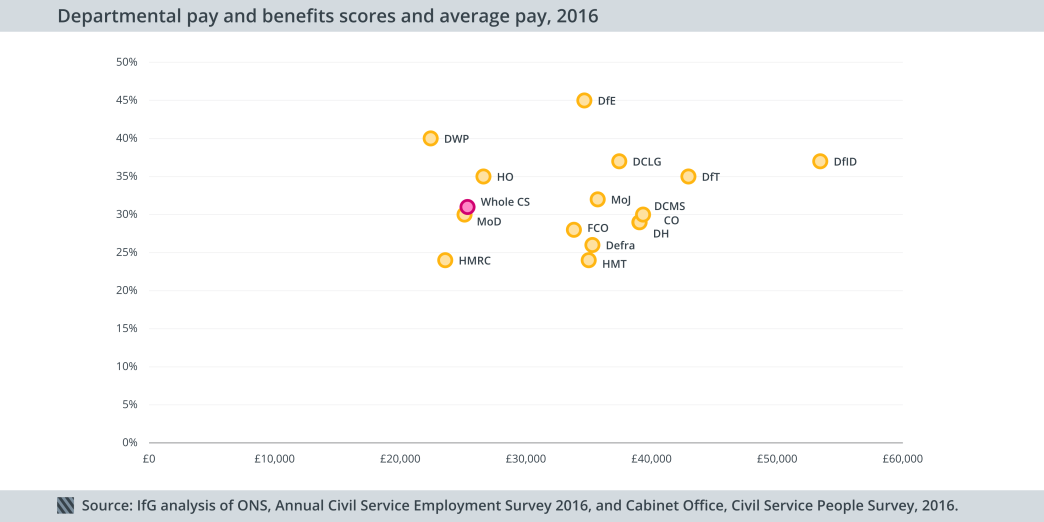
The departments where staff expressed the greatest satisfaction with pay and benefits (DfE, 45% and DWP, 40%) are not the departments with the highest median pay (DfID and DfT). In fact, DWP has the second highest score, despite being the department with the lowest pay.
So how much are civil servants earning?
A considerable number of civil servants are paid below the UK average.
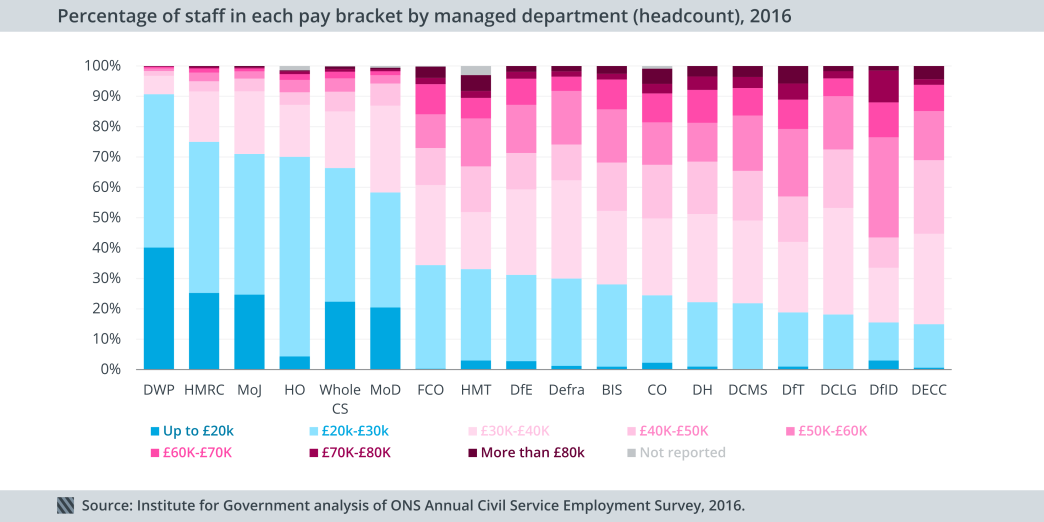
The average UK salary is around £27,000; the closest we can get to that from the data is £30,000. In 2016, 91% of civil servants in DWP were paid below £30,000. In four other departments (HMRC, MoJ, HO, and MoD) over half of staff earned less than £30,000, something that was also true of the civil service as a whole.
As in 2015, DCLG, DfID, and the former DECC remain the departments with the lowest proportion of those paid under £30,000. At the other end of the scale, the Treasury continues to have the highest proportion of staff earning over £80,000 a year (5.3%). Again, the variation between these pay profiles reflects the different grade structures of departments.
Annual pay across the whole civil service is slightly up on 2015.
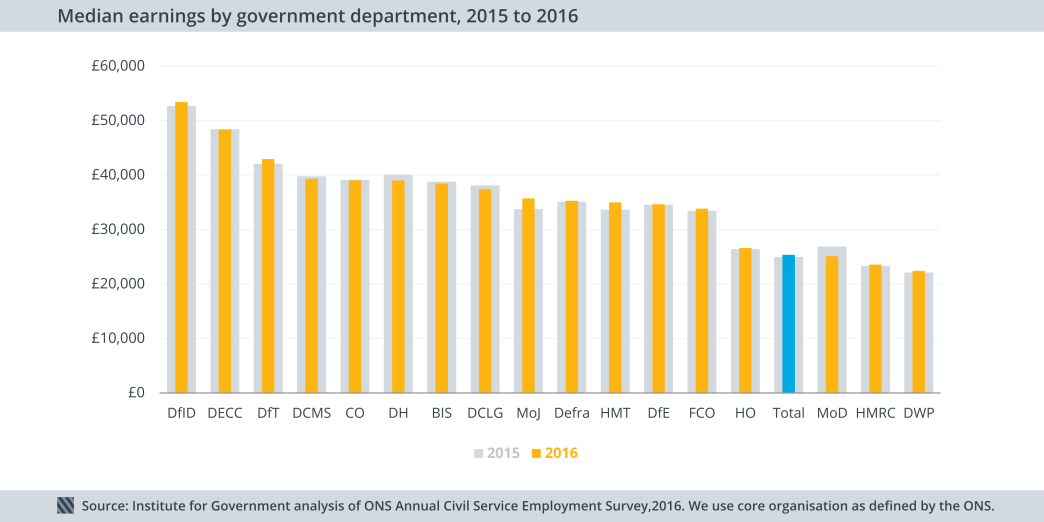
- Seven departments (DECC, DCMS, CO, DH, the former BIS, DCLG, and MoD) saw average salaries fall from 2015. The largest falls were at MoD and DH.
- Of the 11 departments where average pay increased between 2015 and 2016, the largest rises were at MoJ and the Treasury.
- In 2016, the highest departmental average (DfID, £53,430) was more than double the average in the lowest department (DWP, £22,240). This difference is largely explained by the differing grade structures of the two departments: DfID has more staff at higher grades, reflecting its policy-focused role. By contrast, DWP is a delivery-focused department and has a greater concentration of staff at more junior roles.
Senior civil servants at MoJ are the highest paid and those at Treasury the lowest paid.
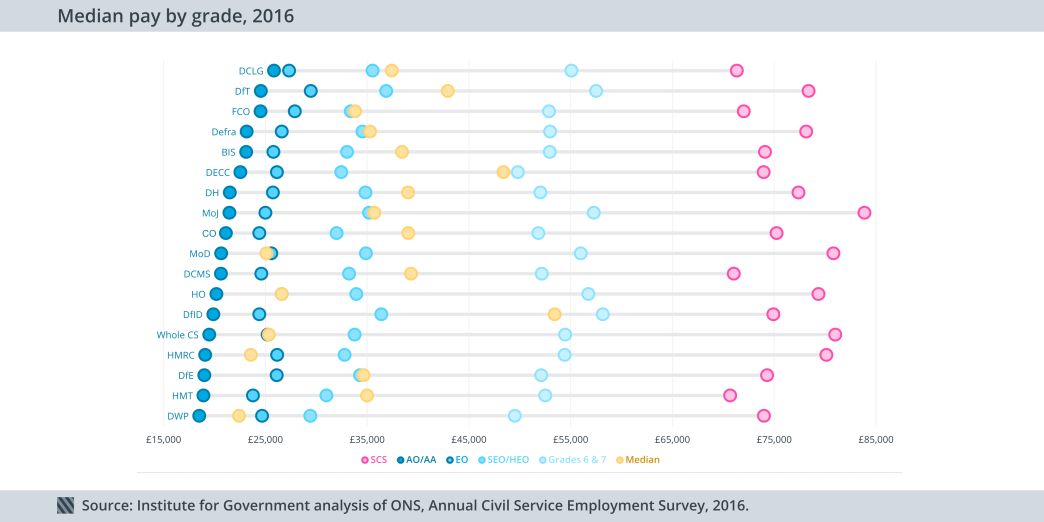
The Senior Civil Service (SCS) sees the biggest range of average salaries of any grade across Whitehall – although other grades also see variation between departments. MoJ has the highest paid senior staff (£83,870), while DWP has the lowest average (£18,510) at the most junior Administrative Officer/ Administrative Assistant (AO/AA) grade.
A small proportion of civil servants earn over £150,000.
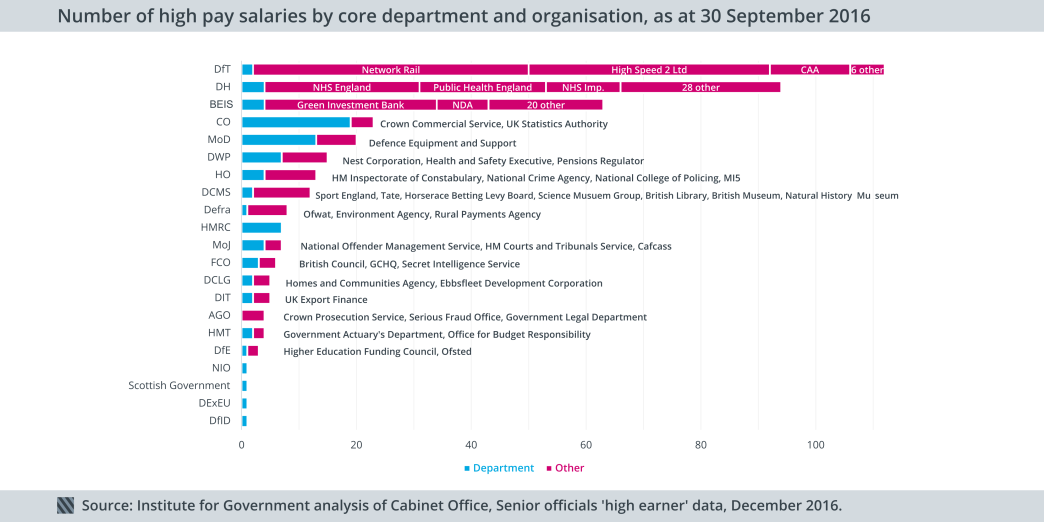
- DfT had 112 high earners. 48 worked for Network Rail, and 42 at HS2 Ltd. Of the 112, just over half (60) were employed in roles categorised by the Cabinet Office as “commercial enterprise in the public sector”.
- DH (94) and BEIS (63) had the second and third highest number of high earners. In DH, most of these were split across agencies and non-departmental public bodies such as NHS England (27), Public Health England (22) and NHS Improvement (13). In BEIS, 30 of the 63 high earners were within the Green Investment Bank and nine in the Nuclear Decommissioning Authority (NDA).
- High earners in the Cabinet Office (23) occupy a number of roles that require specialist skills and experience: from parliamentary counsel to commercial and infrastructure specialists.
Of course, earners over £150,000 are very much the exception, rather than the rule – most civil servants earn a lot less.
The pay cap is already a subject of debate in this election campaign. But whatever the political stripes of the new government, as the civil service faces the major challenge of delivering Brexit alongside other priorities, departments may need to explore other ways of motivating their staff.
- Supporting document
- Whitehall monitor 17.pdf (PDF, 2.17 MB)
- Topic
- Civil service